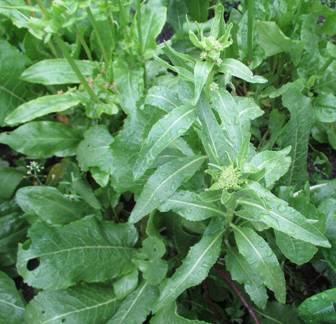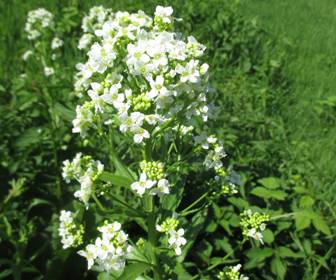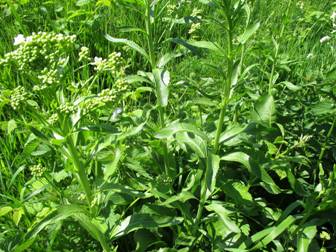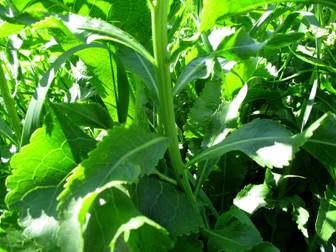




Horseradish (Armoracia rusticana), fam. Brassicaceae.
Sometimes it may be found in personal gardens, and also the wild weedy exemplars occur. Horseradish is a mighty perennial plant, which brings blooming shoots in May, and survives winter in the form of well-known roots.
The nutritional value of horseradish roots (vitamins, minerals, protein, fat content, etc.) is comparable to other crucifer root vegetables – radishes and swedes (rutabagas). However, it has only minor significance, since the most important component of horseradish is not the vitamins but its essential oils, having pungent aroma, acrid and locally irritative, warming, antiseptic, digestive stimulating qualities. Due to much higher content of these oils in horseradish compared to most other vegetables, it is only used in small quantities. For example, the horseradish pastes sold in Ukrainian shops contain it rather diluted. One of the healing properties of horseradish is antiinflammatory; however, an opposite effect may also happen, so usually it is not recommended for acute diseases and during pregnancy. Every person should test one's sensitivity to horseradish before applying it massively. In large doses it may increase blood pressure and cause other side effects like bleedings.
The horseradish leaves are used as well – in culinary (especially for preservation) and to treat radiculitis or other musculoskeletal diseases. It is important to select only the youngest and tender leaves, because it becomes rough very quickly.